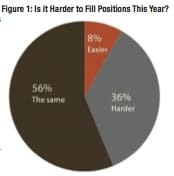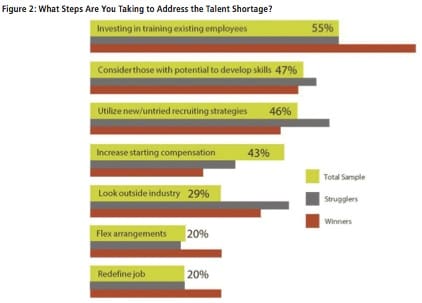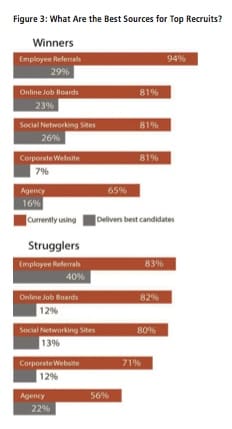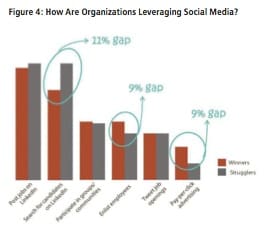New research examines current challenges in the labor market and how organizations can overcome them.
By Ian Cameron
There has been a lot of buzz lately about a talent shortage. The Conference Board’s new report From Not Enough Jobs to Not Enough Workers predicts a 15-year period of tight labor conditions. All signs are pointing in the direction of a candidate’s market.
The 2015 McQuaig Global Talent Recruitment Survey questioned 453 HR professionals to find out what the talent market’s like, what’s working for organizations, and where their challenges lie. Some of the results are rather telling when it comes to the predicted talent shortage and how companies are reacting.
One-third of HR professionals report that it’s harder now to fill positions than it was one year ago. More than half felt it was about the same, and only 8 percent said it was getting easier to fill vacancies year-over-year.
Compared to the 2014 survey, about the same number (34 percent) of respondents felt it was getting harder, but a much smaller percentage (8 percent this year versus 28 percent in 2014) felt it was getting easier. This large decrease may suggest that a talent shortage is, in fact, building and starting to have an impact on some segments of the market.
So what are companies doing to address a talent shortage? Some companies are having more success (deemed winners by the survey) than others (deemed strugglers by the survey). Organizations that are experiencing success are using an average of three strategies to help win the war for talent, the top one being looking more inward and investing in existing employees.
Interestingly, winner companies are much more likely to be investing in training existing staff (75 percent versus 55 percent). This could be a sign of a return to training initiatives. Winner organizations are also more likely to be offering flexible work arrangements and tweaking job definitions than their counterparts.
The type of job placement also has an impact on considering a talent shortage. Survey respondents ranked the roles that are the hardest to fill as:
- Specialized technical roles (54 percent)
- Mid-management positions (37 percent)
- Senior executives (19 percent)
- Entry-level roles (18 percent)
The numbers for mid-management positions may continue to rise in the coming years as baby boomers retire. Organizations need to consider investing in leadership training for both Gen X and Millennial workers. This will help build an internal succession plan and reduce the need to replace baby boomers with external candidates.
Research and anecdotal evidence both point to the fact that Millennials are looking for employers that offer training and development, a clear career path, and ongoing coaching and feedback. The good news: Millennials want exactly what companies can offer.
Sourcing candidates also plays a large role in keeping up with talent issues. The sources delivering the highest quality of recruits include:
- Employee referrals
- Online job boards
- Social networking sites
- Corporate website
Winner organizations are much more likely to be using employee referrals as a channel (94 percent versus 83 percent) and slightly more likely to be using agencies (65 percent versus 56 percent). When it comes to channels delivering the highest quality of candidates, winner organizations are getting pretty even results across three sources: employee referrals, online job boards, and social networking sites. Struggler organizations also leverage employee referrals for quality candidates but rely on external agencies as their next top source. A consideration is volume. The statistics around employee referral success continue to show their value, but volume levels are often low. Organizations need to consider increasing the effectiveness of other channels in order to bring in more higher quality candidates.
There is a large gap in the use and effectiveness for social media for winner and struggler organizations. Winners are more likely to be spending time engaging their employees to help them connect with, and nurture passive candidates, and targeting those same candidates with specific pay-per-click ad strategies through job ads or content. On the other hand, struggler organizations are spending more time searching for candidates on LinkedIn.
Organizations should consider that social media’s strength as a recruiting tool is really in facilitating engagement and building the employer brand. The companies that are doing it right are developing employee personas for their ideal candidates, enlisting their employees as brand ambassadors, and using social media to develop relationships with those who match the employee persona, not just blasting out job ads and searching on LinkedIn.
Ian Cameron is the managing director of The McQuaig Institute.

















